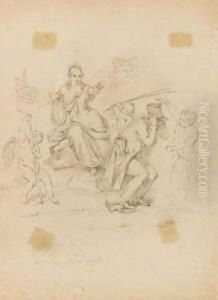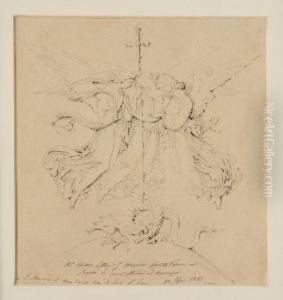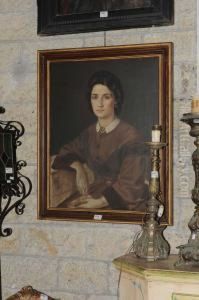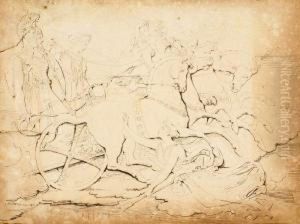Santo Varni Paintings
Santo Varni was an Italian sculptor and educator born on November 13, 1807, in Genoa, Italy. He was predominantly active during the 19th century, a period that saw a resurgence of classical themes and forms in sculpture, which were part of the broader movement of Romanticism in the arts. Varni received his initial training in his hometown at the Academy of Fine Arts in Genoa, where he later became a professor.
Varni's career spanned several decades, during which he produced numerous works including religious and mythological figures, portraits, and funerary monuments. He was particularly known for his skill in marble sculpting, and his works were characterized by their refined elegance and attention to detail. Varni's sculptures often reflected the neoclassical style, which was marked by a return to the simplicity and grandeur of ancient Greek and Roman art.
Aside from his work as a sculptor, Varni also played an important role in the cultural life of Genoa. He was a member of various artistic and cultural societies and contributed to the preservation of artistic heritage in the city. He was involved in the foundation of the Museum of Ligurian Architecture and Sculpture (Museo di Strada Nuova) in Genoa, which is now known as the Musei di Strada Nuova.
Santo Varni's legacy as an artist and educator continued after his death on June 10, 1885. His works remain on display in various collections and museums, and his influence can be seen in the generations of sculptors he taught during his tenure as a professor. Varni's impact on the cultural landscape of Genoa and his contributions to Italian sculpture make him a notable figure in the history of 19th-century European art.



